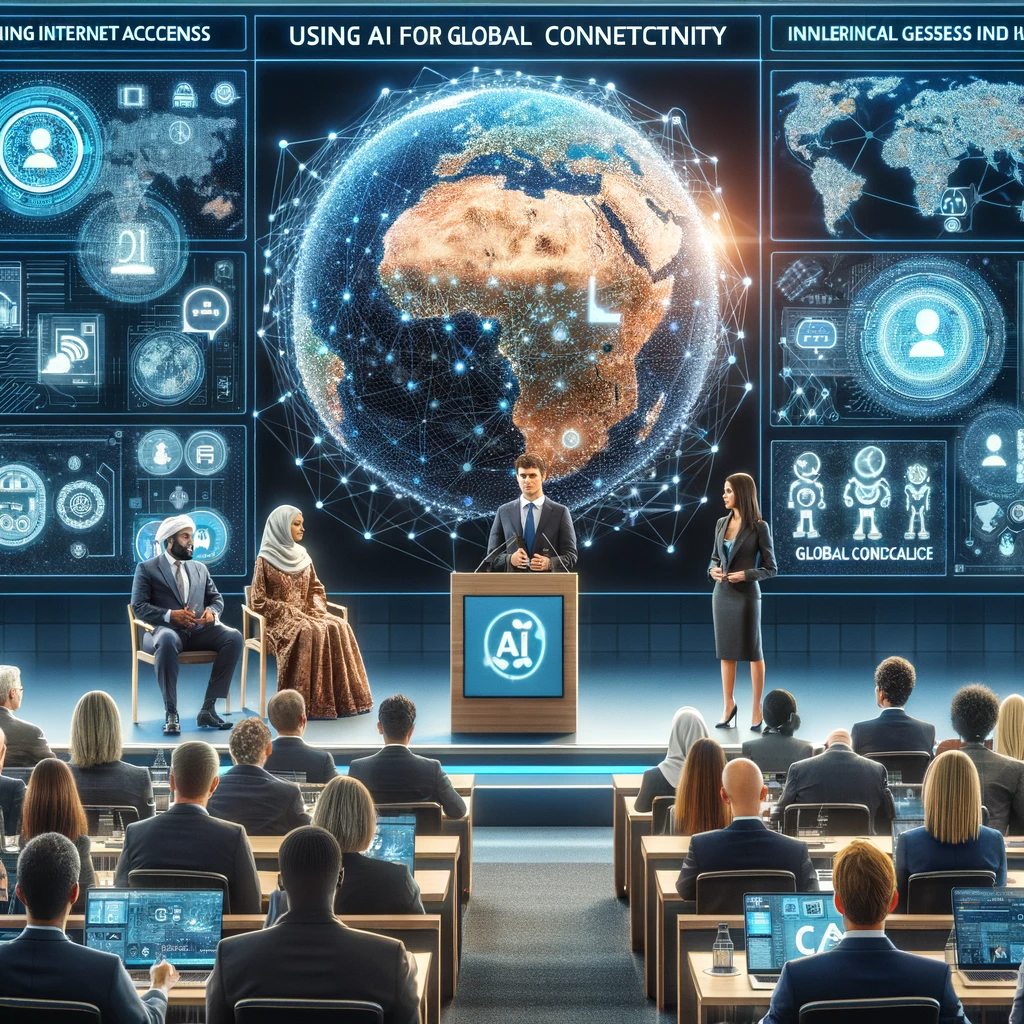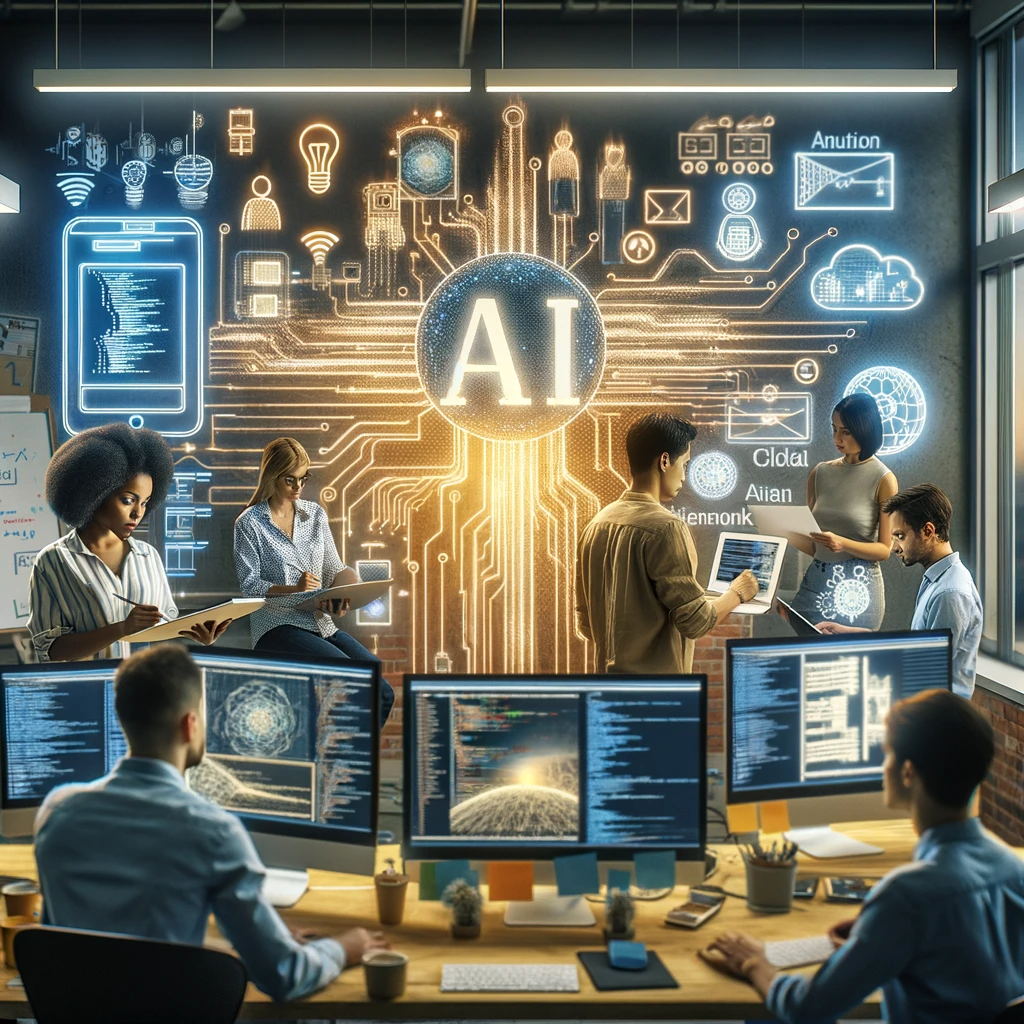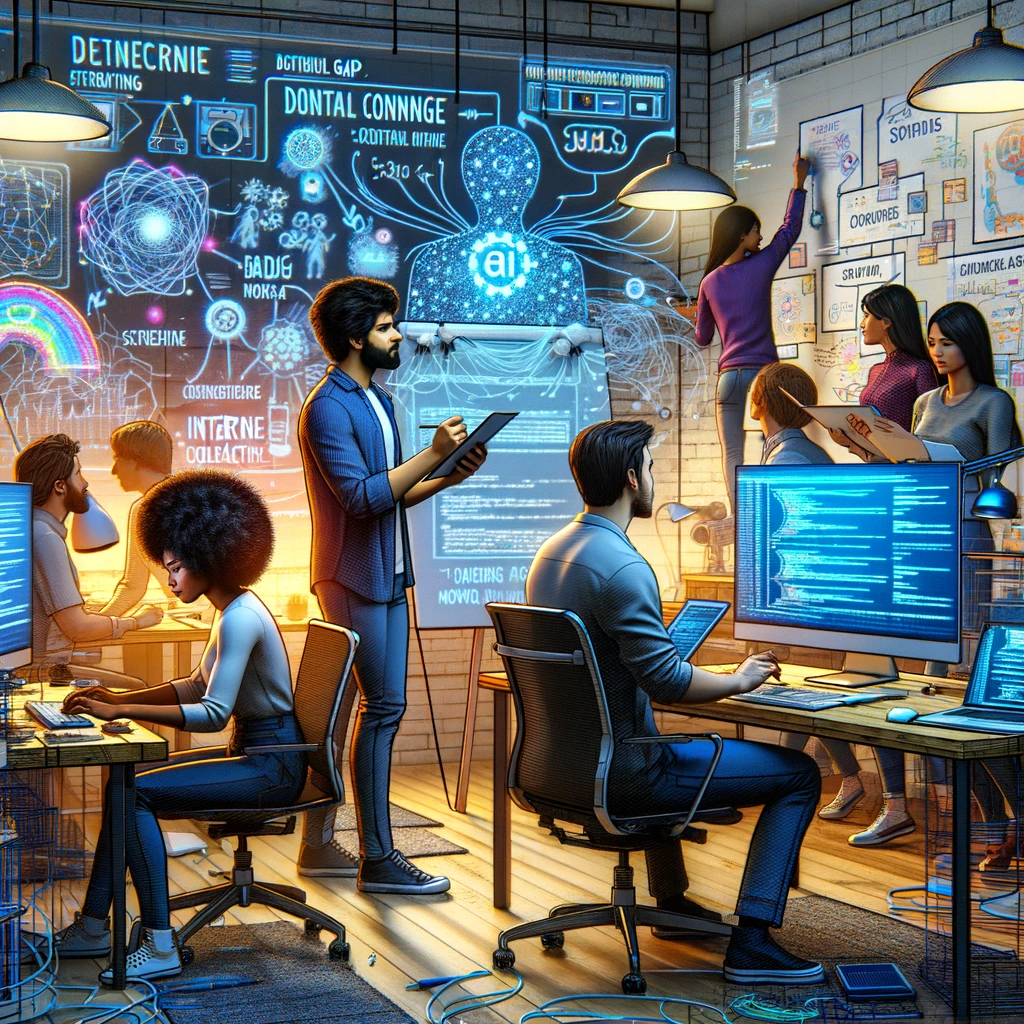In today’s rapidly evolving, technology-driven world, the digital divide has emerged as a critical issue. This divide refers to the growing gap between those with easy access to digital and information technology and those without. This disparity encompasses not just access to the internet and computing devices, but also extends to digital literacy and the ability to use technology effectively. These inequalities are evident across various demographics and regions, with pronounced gaps between urban and rural areas, different socio-economic groups, and across age and education levels.
The impact of this divide is profound, affecting opportunities in education, employment, and access to essential services. As technology becomes increasingly integral to everyday life, those on the wrong side of this divide find themselves at a significant disadvantage.
This brings us to a pivotal question: How can Artificial Intelligence (AI), a frontier technology, be leveraged to bridge these digital inequalities? AI, with its vast potential to analyze data, automate processes, and create tailored solutions, could be a key player in addressing this challenge. In this article, we will explore the various ways in which AI can be utilized to diminish the digital divide, examining its role in enhancing access to technology, improving digital literacy, and ensuring equitable information dissemination.

Understanding the Digital Divide
The digital divide refers to the disparity between individuals and communities that have access to modern information and communication technology, and those that do not. This divide encompasses several dimensions: access to the internet, availability of digital devices, and digital literacy. Internet access is often considered the most fundamental aspect, as it provides the gateway to a plethora of online resources and services. Digital literacy, the ability to use digital technology effectively, is equally crucial, as it determines how beneficial technology can be for an individual.
Socio-economic and geographic factors significantly contribute to the digital divide. In many cases, individuals in lower socio-economic groups and rural areas have limited access to technology and the internet. This disparity is often compounded by factors like age, education level, and income.
The consequences of the digital divide are far-reaching, affecting education, employment, and social inclusion. Lack of access to digital tools and resources can hinder educational and professional development, exacerbating existing inequalities. It can also lead to social exclusion, as a significant portion of social interaction and information sharing now takes place online.
AI’s Role in Enhancing Access to Technology
Artificial Intelligence (AI) has the potential to significantly improve access to technology in underserved communities. By leveraging AI, it is possible to develop low-cost technology solutions that are affordable for these communities. For instance, AI can be used to optimize the distribution and allocation of technological resources, ensuring that they are accessible to those who need them most.
There are several initiatives where AI has been effectively utilized to enhance technology access. For example, AI-driven applications have been developed to provide internet connectivity in remote areas using innovative technologies like balloon-powered internet or low-earth orbit satellites. Additionally, AI can help in customizing low-cost computing devices to meet the specific needs of different user groups.
Case studies showcasing AI’s role in facilitating technology accessibility include projects like Google’s Project Loon, which uses AI algorithms to navigate high-altitude balloons to provide internet access in remote areas, and AI-powered platforms that provide affordable e-learning solutions to students in developing countries.
AI in Advancing Digital Literacy and Education
AI has a promising role in enhancing digital literacy and education, particularly in remote or disadvantaged areas. AI-powered tools and platforms can offer personalized learning experiences that adapt to the individual needs and learning pace of each student. This personalization is crucial in areas where access to quality education is limited.
AI-driven educational tools encompass a wide range of applications, from interactive learning apps that use machine learning to adapt to a student’s learning style, to AI tutors that provide personalized assistance and feedback. These tools are particularly valuable in areas where there are shortages of qualified teachers or educational resources.
Initiatives where AI has been instrumental in overcoming educational barriers include programs like the AI-powered learning platforms that provide customized educational content to students in underprivileged areas. These platforms use AI to analyze students’ learning patterns and tailor the educational content accordingly, making learning more engaging and effective. Examples include the use of AI in online learning platforms like Khan Academy and Coursera, which offer personalized learning paths to students worldwide.

AI in Information Accessibility and Dissemination
Artificial Intelligence (AI) plays a crucial role in making information more accessible and understandable to diverse populations. AI’s capabilities in language translation and content customization are pivotal in bridging knowledge gaps across different linguistic and cultural backgrounds. For instance, AI-powered translation services have drastically improved, allowing content to be accessible in multiple languages, thus reaching a wider audience.
Furthermore, AI aids in content customization, tailoring information to suit the individual needs of users based on their preferences, comprehension levels, and learning styles. This personalized approach ensures that information is not only accessible but also meaningful to the user.
Examples of AI successfully enhancing information access include machine learning algorithms used by search engines to improve the relevance of search results, AI in educational software providing personalized learning experiences, and AI-driven platforms that automatically translate educational content into multiple languages, making it accessible to non-native speakers.
Challenges and Ethical Considerations
Implementing AI to bridge the digital divide comes with its set of challenges and ethical considerations. One significant challenge is the potential bias in AI systems. If AI algorithms are trained on datasets that do not adequately represent diverse populations, they can perpetuate inequalities. Ensuring these systems are fair and unbiased is crucial for equitable digital inclusion.
Ethical considerations in AI deployment include data privacy concerns and the risk of AI-driven digital surveillance. The collection and use of personal data for AI systems must be balanced with the right to privacy and data protection. It’s also essential to consider the ethical implications of AI decisions and ensure transparency and accountability.
Inclusive and ethical AI development is vital to ensure equitable benefits from AI technology. This involves the participation of diverse groups in AI development and decision-making processes to ensure that AI solutions cater to a wide range of needs and do not exacerbate existing inequalities.
Future Outlook and Conclusions
The future of AI in bridging the digital divide looks promising, with ongoing advancements likely to enhance accessibility and inclusion further. Future AI technologies could see more sophisticated language translation, greater personalization in learning and information dissemination, and improved accessibility tools for those with disabilities.
The long-term impact of AI could significantly reduce digital inequalities, making technology and information accessible to all segments of society. The role of AI in creating a more digitally inclusive world hinges on continued innovation, ethical considerations, and proactive measures to address potential biases and inequalities.

Conclusion
Throughout this exploration, AI’s potential in bridging the digital divide has been evident. Its ability to enhance access to technology, improve digital literacy, and disseminate information holds the promise of reducing digital disparities. However, balancing technological innovation with addressing digital inequalities is crucial.
As AI continues to evolve, it raises important questions about its role in fostering global digital inclusion and the measures needed to ensure that its benefits are equitably distributed. The future of AI in reducing digital disparities lies not only in technological advancements but also in our commitment to ethical and inclusive practices in AI development and deployment.
